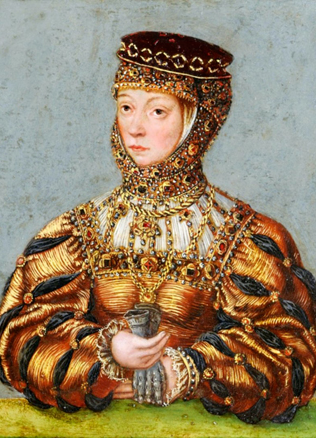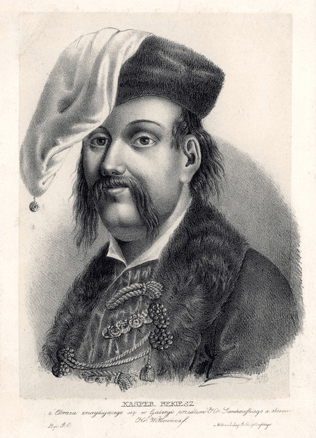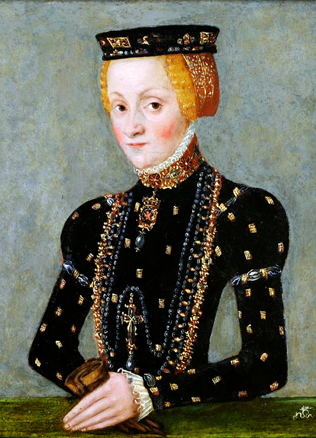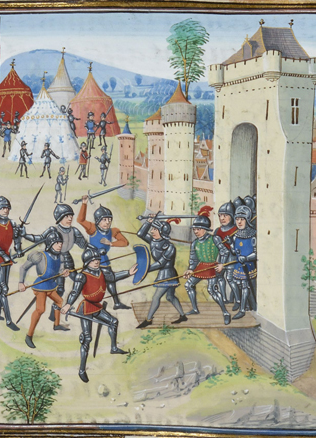Krėva is the place of significant events
The ruins of the castle of Krėva that have survived in the vicinity of the current Lithuanian-Belarus border perhaps are the best illustration and reminder of the stormy political events that took place in the Grand Duchy of Lithuania during the last decades of the 14th century. Krėva belonged to that present-day region of East Lithuania and West Belarus, which was a political nucleus of the country from the beginning of the Statehood of Lithuania. The domains of the ruling families stretched across this region, and famous magnates of the country had their patrimonies there. It was there that the first brick buildings in the territory of Lithuania – castles of the Grand Duke – were built in the 14th century. Enceinte type castles (such castles have survived in Lida and Medininkai in the vicinity of Krėva) symbolised the Grand Duke’s growing power. The knights of the Teutonic Order reached these lands that were some distance away from the frontier quite rarely. The chroniclers of the Order Peter von Dusburg, Wigand von Marburg and Hermann von Wartberge did not record any marches to Krėva. Therefore these early brick castles were built for residential and representation purposes rather than for defensive ones.
It is not known exactly when and how these castles were built. The historians usually speak about the beginning of the 14th century, the years of the rule of Grand Duke Gediminas. It is more likely that this happened in the times of Algirdas and Kęstutis, in the second half of the 14th century. The first mention of Krėva in the sources was made rather late. The Chronicle of the Grand Dukes of Lithuania states that upon his death Gediminas (1341) commissioned his only son Algirdas with ruling of Krėva and Vitebsk. Some years later that Duke managed to become Grand Duke (having overthrown his brother Jaunutis). For several decades Krėva was an important political centre of the country. It was the only residence for Algirdas and his sons; this explains why several highly significant events of that time took place namely there.
Krėva’s captives
We hear about the castle of Krėva for the first time during the conflict between Algirdas’ son Jogaila and Kęstutis over power. Having revealed the conspiracy of Jogaila and the Order and having removed his nephew from the throne of the Grand Duke, Kęstutis, according to the Chronicles of Lithuania, left his patrimony– Krėva and Vitebsk – to Jogaila. In 1382, fatal military actions took place near Kęstutis’ main residence in Trakai where, most probably, Kęstutis and Vytautas, having understood the superiority of the enemies, agreed to negotiate over peace in a foreign camp. The Chronicle of Lithuania writes the following: “And when he arrived in Vilnus, Grand Duke Jogaila sent his uncle, Grand Duke Kęstutis, in chains, to Krėva and imprisoned him in the tower”. Archaeological excavations and archaeological investigations enable us to say more about this tower. That was an imposing main tower of the castle (called “the ducal tower” – the donjon), its height reached 25 meters. Living quarters were arranged on the floors of the tower, their walls were decorated with painting. Usually there was a prison in the basement of such a tower. In August 1382, Kęstutis died or was killed in the basement of the castle of Krėva. Later Vytautas and his wife were sent to the castle of Krėva (true, he was imprisoned in the Castle Hall). Vytautas managed to escape effectively, having changed into the clothes of his wife’s maid.
Greatness of Krėva immortalised in the fatal document
Three years later one more fatal event in the history of Lithuania took place in the castle of Krėva. On 14 August 1385, the so-called “Document of Krėva” crowned the negotiations between Jogaila and the Polish nobility over the baptism of Jogaila and his country, his marriage to Princess Jadvyga and his coronation as King of Poland. In the document announced in the castle of Krėva Jogaila promised to be baptised, and to apply Lithuania to Poland, to free the captives of Polish origin and to get back the lost lands of both countries. In February and March of 1386, these commitments of Jogaila (later announced by the Polish noblemen) were realised – Jogaila became King of Poland, and the long epoch of the Polish-Lithuanian union started. Here, in this indirect sense, we can speak about the “Union of Krėva”, though Jogailas’ document of Krėva was not a union document but rather a pre-matrimonial commitments of the Grand Duke.
“
Under the rule of Jogaila Krėva was still understood as a political centre of the Algirdaičiai.
Under the rule of Jogaila Krėva was still understood as a political centre of the Algirdaičiai. Jogaila intended to appoint his younger brother Vygandas there who died soon. The status of Krėva is made more prominent by the fact that one of the first Catholic churches in the country was built there. Vytautas also sometimes resided in the castle of Krėva though this castle did not belong to the group of his favourite residences. After the death of Vytautas, the Grand Dukes visited Krėva much rarer. True, in 1432–1435, Švitrigaila and Žygimantas Kęstutaitis competed fiercely for the castle during their struggle. With battles going on, the castle suffered badly for the first time. During the following decades the castle lost its political important. After the Tartars burned the castle in the 16th century, it was deserted and neglected.
“
Sigismund Herberstein, the envoy of the Holy Roman Emperor, who travelled across the country in 1518, dryly stated that Krėva was a small town with a neglected castle.
Sigismund Herberstein, the envoy of the Holy Roman Emperor, who travelled across the country in 1518, dryly stated that Krėva was a small town with a neglected castle. The personalities of the Elders (a sort of deputies) of Krėva reflect the decay of the political significance of that place. If at the turn of the 14th and the 15th centuries the nobleman Andrius Goštautas (Pol. Andrzej Gasztołd) ruled there, at the end of the 15th and at the beginning of the 16th centuries there were little known noblemen Stanislovas Dukurna and Stanislovas Narbutaitis.
Rimvydas Petrauskas



